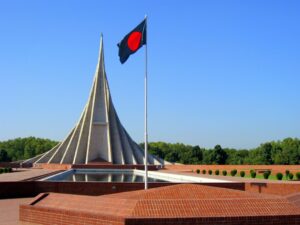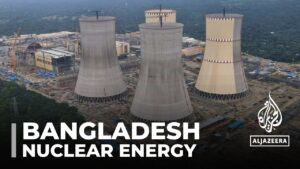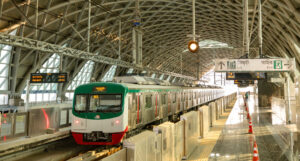BANGLADESH
Bangladesh is one of the world’s most densely populated countries, with its people crammed into a delta of rivers that empties into the Bay of Bengal. Poverty is deep and widespread, but Bangladesh has in recent years reduced population growth and improved health and education. Formerly East Pakistan, Bangladesh came into being only in 1971, when the two parts of Pakistan split after a bitter war which drew in neighboring India. Bangladesh spent 15 years under military rule and, although democracy was restored in 1990, the political scene remains volatile. Islamist extremism has been rising in the usually tolerant country. The low-lying country is vulnerable to flooding and cyclones, and stands to be badly affected by any rises in sea levels. PEOPLE’S REPUBLIC OF BANGLADESH Capital: Dhaka
- Population 152.4 million
- Area 143,998 sq km (55,598 sq miles)
- Major language Bengali
- Major religion Islam, Hinduism
- Life expectancy 69 years (men), 70 years (women)
- Currency taka UN, World Bank LEADERS President: Abdul Hamid Abdul Hamid, formerly the Speaker of parliament, was elected unopposed to the ceremonial post in 2013. Prime Minister: Sheikh Hasina Economy Overview: Bangladesh’s economy has grown roughly 6% per year since 1996 despite political instability, poor infrastructure, corruption, insufficient power supplies, slow implementation of economic reforms, and the 2008-09 global financial crisis and recession. Although more than half of GDP is generated through the service sector, almost half of Bangladeshis are employed in the agriculture sector with rice as the single-most-important product. Garment exports, the backbone of Bangladeshi?\”s industrial sector and 80% of total exports, surpassed $21 billion last year, 18% of GDP. The sector has remained resilient in recent years amidst a series of factory accidents that have killed over 1,000 workers and crippling strikes that shut down virtually all economic activity. Steady garment export growth combined with remittances from overseas Bangladeshis, which totaled almost $15 billion and 13% of GDP IN 2013, are the largest contributors to Bangladeshis?\” current account surplus and record foreign exchange holdings. LABOR FORCE: 78.62 million Country comparison to the world: 7 note:extensive export of labor to Saudi Arabia, Kuwait, UAE, Oman, Qatar, and Malaysia; workers’ remittances were $10.9 billion in FY09/10 (2013 EST.) CONCLUSION : Bangladesh is a populous country in the world compared to its land area. When there was great burden of our overpopulation then export of our manpower became a great blessing for us before and after early 1980’s and at present too. Nowadays our overpopulation has turned into a great human resource due to the contribution of the manpower export sector. Manpower sector is the only sector in Bangladesh that can bring foreign remittance without any hassle or obstacles such as our local political instability. This sector not only confirms the regular inflow of remittance in our internal economy it also reduces the employment crisis, eliminates poverty in the rural and urban areas and also concentrates and influences to its other related sectors like Training centers, Medical centers & hospitals, Passport office, Travel agency, Photo studio, Banks & financial institutions, Transport & communication centers etc. and many more economical activities. From that point of view, the Manpower export sector definitely can be called a productive industry. So, our Govt. and concerned ministries, departments and specially our foreign missions, Embassies abroad must give highest attention to our most prospective MANPOWER EXPORT SECTOR.








